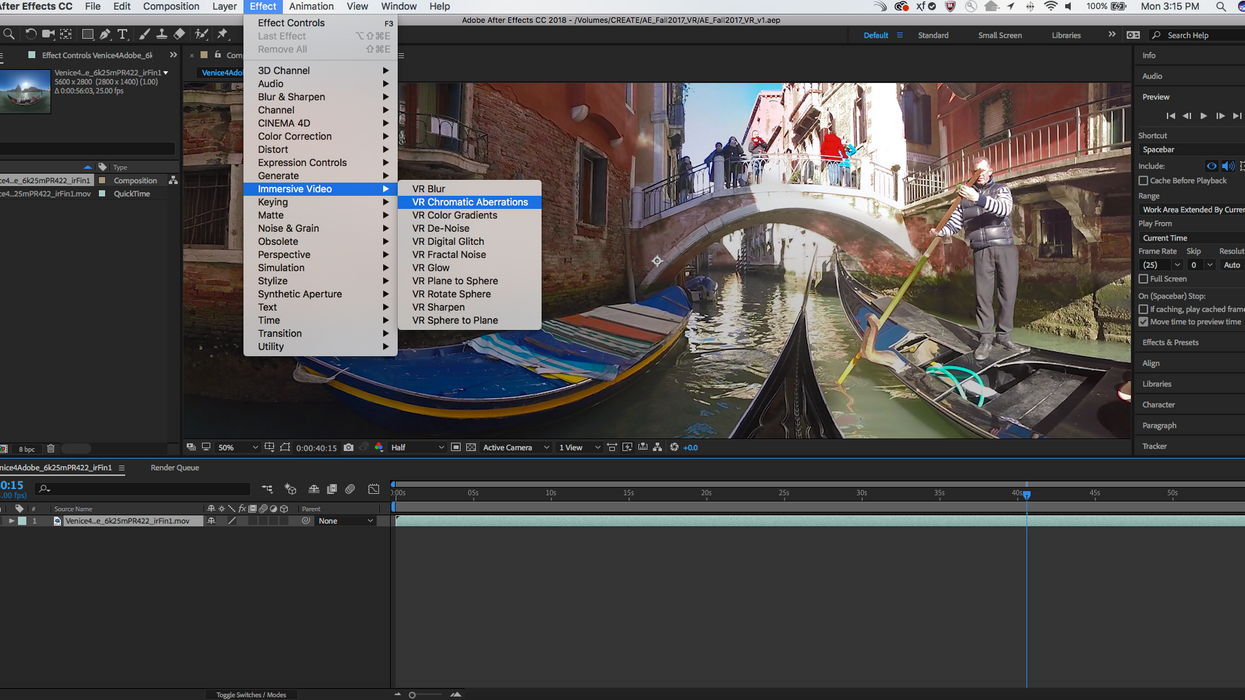Adobe Creative Cloud Takes Aim at Media Composer
The goal of this refresh from Adobe is to speed up your workflow so you have more time to be creative.

Adobe has unveiled a refresh across the Creative Cloud line in time for IBC 2017, with two big areas of improvement being new features in both Premiere Pro and After Effects. The overall theme of all the updates is speeding up your workflow, enabling filmmakers to move through the post process more quickly, with more time spent making creative decisions and less time and effort wasted on busywork.
The updates for Premiere Pro take aim squarely at Avid Media Composer's biggest remaining strength, its shared project workflow. As more and more editors and post houses move from Avid onto Premiere, and potentially Resolve 14, the main argument that many still make for Media Composer is the ease with which it enables multiple editors to work on the same project and media at the same time. Resolve 14 has moved aggressively on this territory with its latest release, and Adobe has quickly moved into the space as well with the new set of updates.
Users can now keep multiple projects simultaneously open, enabling fast switching back and forth between projects, which is a huge time saver if you are working on a complicated show that might be broken up into several episodes or acts. Those projects are also now able to be opened by multiple users at the same time. While only one user at a time will have editable access at a time, other users will be able to view a locked, read only version of a project, which is useful for copying over sequences and media and reviewing footage. This functionality clearly echoes the bin sharing functionality of Media Composer, but using projects instead of bins.

Of course, Adobe has had Team Projects as a cloud-based service for awhile, however, cloud sharing for projects hasn't really taken off yet in North America. With our slow internet and the increasing size of videos files, it doesn't seem likely too soon. Having this sort of functionality at the local level, where multiple users on the same local network able to share a project, is a huge plus for Premiere. Of course, you will still need the hardware infrastructure of a local network and a shared media server to support it. Those network solutions are available from a variety of sources, including EditShare and Avid, who promote their Premiere functionality.
Adobe hasn't been slacking in the motion graphics and visual effect world either, with one of the coolest new features being an officially supported workflow for data driven motion graphics. For instance, if want to create a motion graphic map displaying a table of data, you previously had to use unsupported hacks to turn that json data into a motion graphic. If you wanted to update that map regularly with new data in new tables, it was a hassle. Adobe has now built a native workflow for driven animations with databases, which is going to be huge in the motion graphics world, especially for creators who regularly display scientific data visualizations in their work. The developers are also doing a lot of work in GPU acceleration, now motion blur and linear transforms are GPU accelerated. This increases renders sometimes up to 5x, bringing renders from 3fps to 15fps. Speaking of GPU acceleration, the integration of Mettle technology into Creative Suite continues with a host of new VR tools that are all driven GPU only. Adobe has put a ton of work into the preview process for VR, enabling the display of timeline and palette tools while previewing your piece in the immersive environment of your choice. This, in combination with better tools for applying VR plugs and transitions across the edge boundaries of the space and a greater ability to change the rotation of the sphere, should be useful to filmmakers exploring VR.
Adobe is working to bring AI processes into the post work with Adobe SenseI implementation, which brings auto-ducking to Adobe Audition. Additionally, ADR tools are improved to help actors time out their ADR more easily. We're going to start seeing more and more AI tools deployed to make our workflows faster in the next few years, with auto ducking as a great place to start.

The biggest takeaway here is the improved shared workflow tools for multi-editor projects. Even a few years ago there were clear distinctions between NLE platforms, with certain workflows requiring certain software to function. The pace of development is accelerating rapidly, however, and with this latest round of updates, it's obvious Adobe is aiming to place Premiere as a viable choice for projects from the smallest social video to the biggest multi-user TV show.
For more info check out Adobe Creative Cloud.











